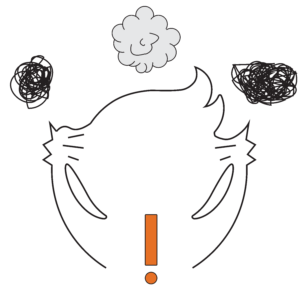The 4 Thinking Styles and how they influence our decisions

Written by Anderson Niu
December 1st, 2020

In this article, you will find our own analysis on the ways of thinking and how we use them to generate ideas and make decisions.
I always like to think of extreme opposite aspects when I need to make decisions. For example, either we understand the problem, or we do not understand it; either it is something we can control, or something we cannot control. Moreover, some people might also consider moral aspects when making decisions by deciding if something is right or wrong.
Regardless of the method we use to organize our thoughts, we end up making decisions based on a plethora of other factors, such as emotions, mood, logic, values, etc. I believe that if we can analyze our decisions based on just a few general opposite aspects, just as the three examples described above, we can discover patterns in our decision-making. Here in Newspot, we consider these patterns as the “Thinking Styles”.
 There are many studies on thinking styles. Some researchers state that there are 5 of them, such as Robert Bramson in his book ‘Coping with Difficult Bosses’; Myers-Briggs has an interesting analysis of thinking styles related to their ‘16 personalities’; finally, Edward de Bono’s studies mention “6 thinking hats” according to our mood and judgements.
There are many studies on thinking styles. Some researchers state that there are 5 of them, such as Robert Bramson in his book ‘Coping with Difficult Bosses’; Myers-Briggs has an interesting analysis of thinking styles related to their ‘16 personalities’; finally, Edward de Bono’s studies mention “6 thinking hats” according to our mood and judgements.
The 4 Thinking Styles we use
Here in Newspot, we work with only 4 thinking styles. Their names are the same as the ones described by Robert Bramson, but the concepts are different. The 4 thinking styles we use are:
– Idealistic
– Analytical
– Realistic
– Pragmatic
As we have unique minds, some of us focus more on the creative side by exploring opposite ideas, while others are more analytic and prefer to stick with the facts and proven steps. Some people are focused on short-term goals, while others tend to worry about long-term outcomes.
Even though I mention only 4 styles here, we apply a diverse variety of thinking styles depending on the aspects mentioned before, and we use all of them according to situations. The term “styles” used here, by me, refers to a thinking pattern that can, somehow, be predicted from our most common decisions and reactions.
Having said that, beware that the styles I will describe below are just the representation of the most common approaches people adopt to make decisions:
Idealistic Thinking
Idealists set high standards not only for themselves, but also for anyone who they interact with. They are always trying to picture the IDEAL scenario for every endeavor they are involved in.
 This approach makes people see them as dreamers and very positive people. On the other hand, they tend to be perceived as perfectionists, intense, and/ or megalomaniac.
This approach makes people see them as dreamers and very positive people. On the other hand, they tend to be perceived as perfectionists, intense, and/ or megalomaniac.
They tend to have a high level of energy and commitment on everything they do; however, their high expectations on things they cannot control can be dangerous to their self-esteem.
Here is an example of how idealists think:
imagine that I just started this blog… Before even writing the second article here, I am already thinking about my blog being a reference in Forbes, seeing myself living in my private island, with my jet, relaxed, with my 3 other businesses already thriving, my tv series running in every channel, and… You can imagine where that can go.

That’s how the idealistic thinking style works – by projecting the ideal results in a far future. The problem is that they try to “rewind the plan in their head” to figure out the steps needed to get there.
As the example above, megalomaniac plans like that are very common among idealists, and they are extremely hard to track the initial steps; therefore, many of these thinkers struggle to start new projects.
Pragmatic Thinking
 Pragmatists do not like to waste time. Period. This can reflect on their assertive communication, on their proactivity, and on their go-getter attitude.
Pragmatists do not like to waste time. Period. This can reflect on their assertive communication, on their proactivity, and on their go-getter attitude.
They are always trying to understand the logic in the process of any endeavor they get involved in, and that also makes people perceive them as practical and inventive. Unfortunately, when it comes to interactions, people might see them as uninterested or judgmental.
Imagine you calling a company to ask some simple questions about their business. Instead of taking 5 minutes to answer your questions, they only tell you “please visit our website at www. _________ . com”. You will find the answers you need there.”
 Regarding this example, in their mind, why would they spend their time if the information is already there? “Take some time and do your research dude! We have already done our part in providing the content to you. Now it is YOUR RESPONSIBILITY to do something about it.” In other words, pragmatic thinkers like to take initiative, and they expect others to do the same.
Regarding this example, in their mind, why would they spend their time if the information is already there? “Take some time and do your research dude! We have already done our part in providing the content to you. Now it is YOUR RESPONSIBILITY to do something about it.” In other words, pragmatic thinkers like to take initiative, and they expect others to do the same.
Analytical Thinking
 The analytical thinking style focuses more on long-term goals, and, to achieve that, organization is one of the most important success factors for the mind who share this style of thinking.
The analytical thinking style focuses more on long-term goals, and, to achieve that, organization is one of the most important success factors for the mind who share this style of thinking.
analysts are always trying to understand the environment and how elements interact with it before taking action. In other words, they try to connect the dots before making decisions.
They love analyzing processes and procedures to create or read systems. This passion for organization helps them to delegate and prioritize information and tasks, but can also give the impression that they are slow thinkers or not very practical.
Imagine that you have to choose 1 of the 3 flavors of ice cream – chocolate, vanilla, or coconut. Many people would just go with their favorite flavor and make the decision right away. Analysts could think:
“Ok… most people chose chocolate, and they seem to be enjoying, but vanilla is my favorite. The problem is that I always eat vanilla, so, maybe it is time to try something different like coconut. Ok, it will be coconut or chocolate. Now, which one looks tastier? Let me try both and see which one I like more. Then, I will choose my flavor.”

In a nutshell, analysts tend to be more methodical, so those who adopt this thinking style prefer to understand the big picture before making decisions. They observe first, study the facts, collect data, and then prepare a plan to take action. This is one of the reasons why many of analytical thinkers struggle in making quick decisions or working under pressure.
Realistic Thinking
Realists usually tend to adopt a logical approach, so they can understand the main steps of any project they get involved with.

As the word indicates, they like REAL and tangible solutions, which means that they tend to be good problem-solvers and decision-makers, but might also be perceived as poor creative thinkers and / or inflexible.
Here is an example of how realists think:
Imagine your boss asks you to take more responsibilities over this week, even though you already have a considerable amount of work to deliver soon. Realists would ponder the opportunity with their time and decide based on whatever they could prove it is doable. They might think:
“If I included those tasks in my schedule, I would not be able to finish them because the deadline would be unrealistic. Even though it is an opportunity for promotion, it does not fit my schedule, so I will say NO.”
Realistic thinking focuses on effectiveness, so it helps us to consider aspects of the environment that can help us to achieve impactful results.

As a consequence of being focused on the quality of results, realists tend to find it difficult to give opinions or making decisions that involve risk, especially because risks are hypothetical, and they need certainty to guarantee a good result.
Key points of this article:
1) There are basically 3 aspects that help us to make decisions:
- If we understand it or not
- If it is under our control or not
- If something is right or wrong
2) We analyze 4 thinking styles, and they are:
- Idealistic: Focus on creating standards
- Pragmatic: Focus on creating efficient environments
- Analytical: Focus on creating organized systems
- Realistic: Focus on effective implementations
Did you like this article?
Let us know here in the comments by sharing what thinking style you use the most. :)



